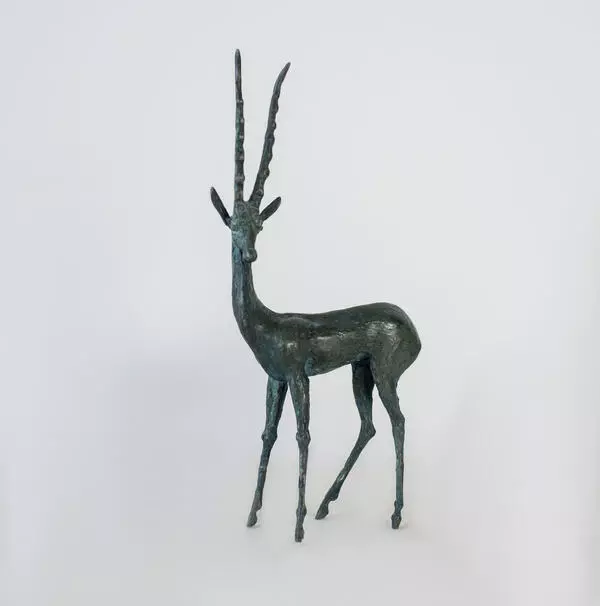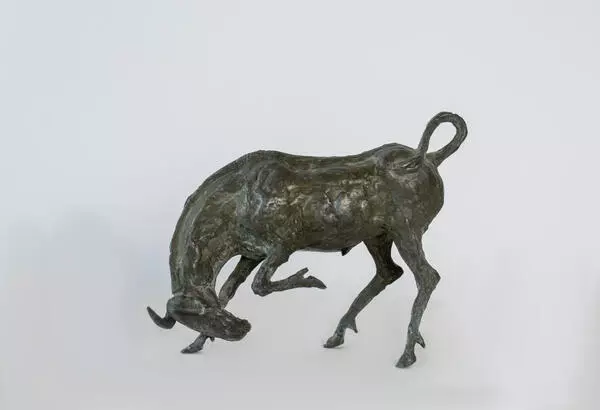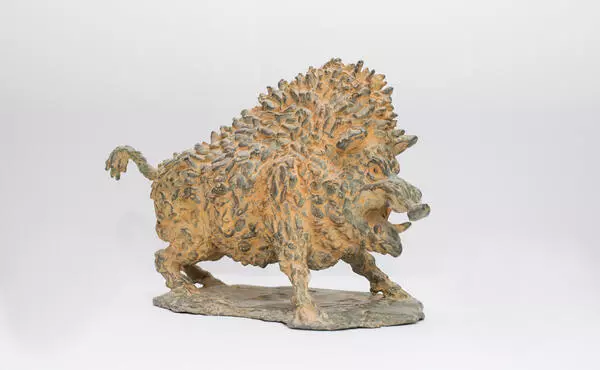The sculptor Andrey Martz created the small plastic artwork “Bird with Fish” in 1993. He depicted a heron with its legs wide apart, bent over, snatching a fish out of the water with its powerful beak.
The heron prefers a near-water lifestyle. Its feathers get wet easily, so it has long legs and does not dive or swim. The heron usually settles in wetlands where it can catch fish, frogs and tadpoles, crustaceans, reptiles, insects, and various small rodents.
The heron is very greedy, eating all the animals it can handle. Until the 1980s, scientists believed that these birds caused irreparable damage to valuable commercial fish, especially in fish farms. But modern research proves that this negative impact is extremely small: herons eat mostly weakened, sick or parasite-infested fish.
Herons adapt their hunting techniques to different situations. The bird may wait motionless for potential prey passing by, or it may walk slowly in shallow water, stretching its neck. Some herons freeze and open their wings, shading a part of the reservoir so that they can better see what is going on in the deep water. Sometimes the bird deliberately frightens fish and small animals by stirring up the bottom mud with its legs and at the same time spreading its wings. Often a heron steals prey from gulls, cormorants and bitterns that hunt nearby.
When it comes to fish, herons mostly prefer perches, carps, loaches and gudgeons. The bird plunges its head swiftly into the water and grabs the fish across the trunk. Then it pulls the prey out of the water and throws it in a way to position it along its long beak. It slowly swallows the prey whole and headfirst. If the fish is too large, the heron tweaks it, strikes it with its beak, breaking the bones in the process, then rips it up and swallows it in pieces.
Andrey Martz depicted the heron in a moment of a successful hunt: it prepares to toss the fish and swallow it. Martz belonged to the animal sculptors who never humanized their animal characters: his animalistic figurines showed the real habits and characters of various animals and birds.
The heron prefers a near-water lifestyle. Its feathers get wet easily, so it has long legs and does not dive or swim. The heron usually settles in wetlands where it can catch fish, frogs and tadpoles, crustaceans, reptiles, insects, and various small rodents.
The heron is very greedy, eating all the animals it can handle. Until the 1980s, scientists believed that these birds caused irreparable damage to valuable commercial fish, especially in fish farms. But modern research proves that this negative impact is extremely small: herons eat mostly weakened, sick or parasite-infested fish.
Herons adapt their hunting techniques to different situations. The bird may wait motionless for potential prey passing by, or it may walk slowly in shallow water, stretching its neck. Some herons freeze and open their wings, shading a part of the reservoir so that they can better see what is going on in the deep water. Sometimes the bird deliberately frightens fish and small animals by stirring up the bottom mud with its legs and at the same time spreading its wings. Often a heron steals prey from gulls, cormorants and bitterns that hunt nearby.
When it comes to fish, herons mostly prefer perches, carps, loaches and gudgeons. The bird plunges its head swiftly into the water and grabs the fish across the trunk. Then it pulls the prey out of the water and throws it in a way to position it along its long beak. It slowly swallows the prey whole and headfirst. If the fish is too large, the heron tweaks it, strikes it with its beak, breaking the bones in the process, then rips it up and swallows it in pieces.
Andrey Martz depicted the heron in a moment of a successful hunt: it prepares to toss the fish and swallow it. Martz belonged to the animal sculptors who never humanized their animal characters: his animalistic figurines showed the real habits and characters of various animals and birds.





